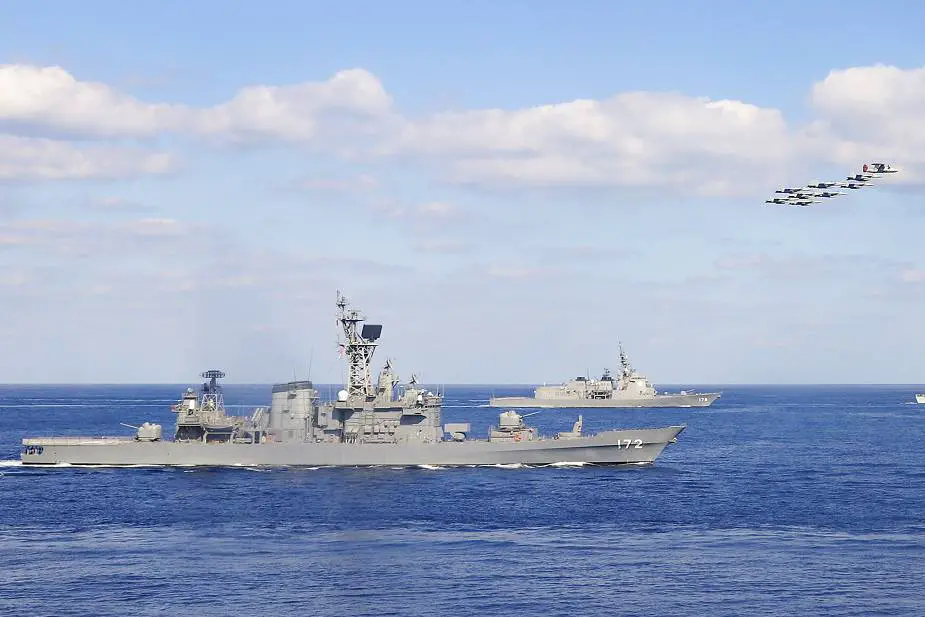Breaking news
US and Japanese aircraft conduct air operations during the naval exercise Keen Sword 21.
According to information published on the Twitter account of the U.S. Department of Defense, on October 31, 2020, the U.S. and Japanese aircraft have conducted air operations during the naval exercise Keen Sword 21. It is a biennial, Chairman of the Joint Chiefs of Staff-directed, U.S. Indo-Pacific Command-scheduled, and U.S. Pacific Fleet-sponsored field training exercise (FTX). The joint/bilateral FTX runs through November 5, 2020.
Follow Navy Recognition on Google News at this link
 U.S. and Japanese aircraft fly in formation above Japanese and Canadian vessels during Keen Sword 21 in the Philippine Sea. October 31, 2020. (Picture source Twitter account U.S. Department of Defense)
U.S. and Japanese aircraft fly in formation above Japanese and Canadian vessels during Keen Sword 21 in the Philippine Sea. October 31, 2020. (Picture source Twitter account U.S. Department of Defense)
Keen Sword is the latest in a series of joint/bilateral field training exercises conducted since 1986 designed to increase combat readiness and interoperability of the JSDF and U.S. forces. Exercises like Keen Sword provide the JSDF and U.S. military opportunities to train together across a variety of mission areas in realistic scenarios, enhancing readiness, interoperability, and building credible deterrence.
The exercise, conducted in Japan, Okinawa prefecture, and surrounding waters involved 9,000 personnel from the U.S. Navy, Air Force, Army, and Marine Corps participate, including U.S. Navy ships from the Ronald Reagan Carrier Strike Group and more than 100 aircraft from Carrier Air Wing (CVW) 5, USS Ashland (LSD 48), HMCS Winnipeg (FFH 338), Commander Task Force 72 and 5th Air Force.
Units from the U.S. military and their JSDF (Japan Self-Defense Forces) counterparts will train in a comprehensive scenario designed to exercise the critical capabilities required to support the defense of Japan and respond to a crisis or contingency in the Indo-Pacific region.
U.S. training will focus on maritime, ground, and air events. Because of the bilateral nature of this exercise, JSDF training will be similar and will exercise a wide range of warfighting capabilities and demonstrate the inherent flexibility and capability of the U.S. and Japanese militaries.


























